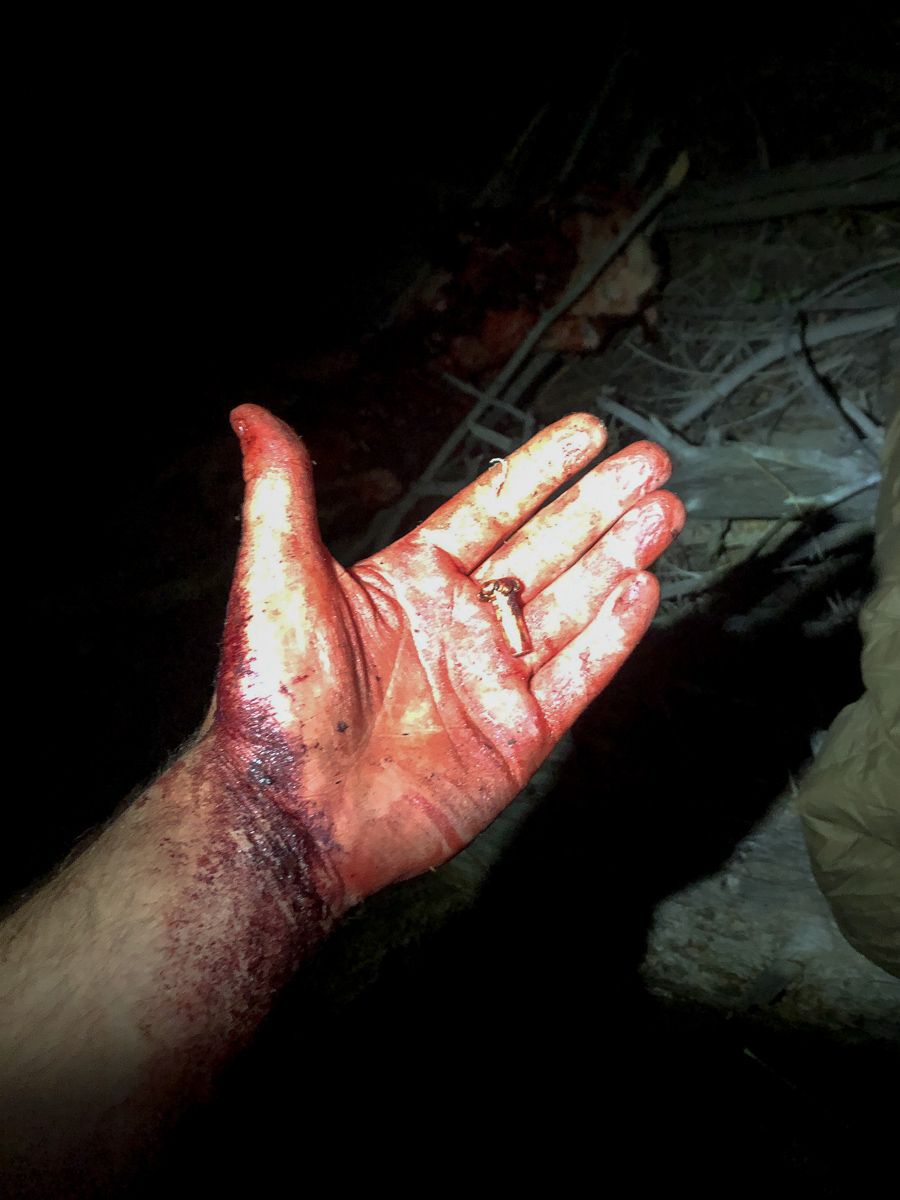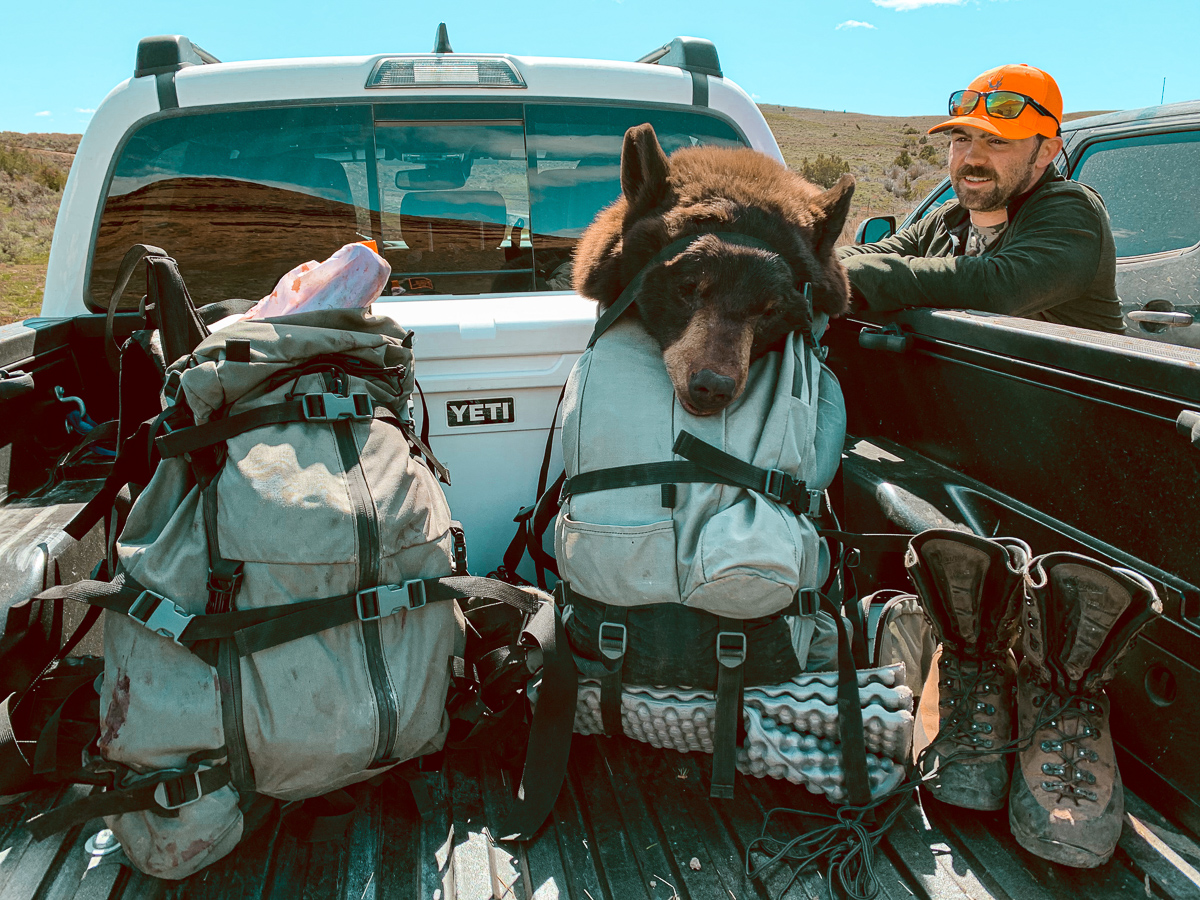Black Bears on a Time Budget
How I modified my tactics to make the most of my spring bear hunting without vacation time.
By Jaden Bales
No vacation time? No problem. That’s the attitude I laced my boots with for the 2020 spring bear season.
I spent a total of 14 days to punch my black bear tag spot and stalk style last year. In those efforts, I took days off from my old job, usually a couple at a time. I had not even started racking up vacation time at my new job and in a new town before the spring black bear season was set to start. I did not have the same amount of time luxury as years passed, but I still wanted tasty bear breakfast sausage. I set out with an optimistic outlook this year. I used past experiences and suggestions from mentors, to hone my 2020 game plan. The result? I tagged out on my 4th evening of hunting the 2020 Wyoming spring bear season.
How It Went Down
I didn’t start hiking from a closed road gate in a llama pasture until 5:00 PM that Wednesday. Starting a hike that late was no biggie. I planned on hiking to a high place to sit behind the glass for the final two hours of daylight. My 5 o'clock departure left plenty of time to burn boot leather and get into the backcountry.
After working my way up a secluded canyon, I came to the head of the drainage where a handful of creeks came together. I could see a couple of miles up each drainage. There were meadows with new grass shoots in each of them. Timber for cover. Water at the bottom of all creeks. The height from the pinnacle of the canyon to the bottom of the drainage was
I had stared at countless stumps, sticks, and stones thinking they were the perfect shape of a bear. When I finally actually found one, there was no doubt in my mind what it was, though. It was over a mile out as the crow flies. I did some quick calculations and figured I could get there, study the bear, and make a cross canyon shot at last light.

Last summer, I put together an upgraded rifle setup chambered in 300 WSM. First of all, I love carrying around an 8 lb rifle, but secondly, I am super confident in the trajectory of the 180 grain Hornady GMX bullets flying just under 3000 fps. In the past year, I've spent extra range time behind that rifle shooting well passed 500 yards. The 323 yard shot on the bear was right up my alley.
As my weapon barked in the last minutes of shooting light, I saw the beautiful chocolate bear drop in its tracks. Though most bears spin, roll, run out of sight, this tracking job did not have the usual suspense of a track job. For that, solo-hunting me was grateful.
Half of the meat came out of that deep bear hole with me that night. The next morning, I returned to the game bags hanging from the meat tree with the company of my friend and coworker, Jess Johnson. We packed the rest of the bear out in the quintessential leg-burning grinder of a packout. It was the packout backcountry hunters dream of and regret.
My Game Plan
Entering the season, my plan of attack was simple. Spend as many evenings glassing good spot and stalk bear country as possible. Even if it meant I only had an hour or two before dark to put my peepers behind optics, I was going to do it. Though someone shouldn’t feel discouraged to bear hunt all day long, I’ve found bears reliably pop out in the last couple hours of daylight.
Trying to get more time in, I even convinced Jess to come on a bow-hike with me in the archery season dates before the rifle opener. We brought snowshoes, expecting to find a burned off hillside on the other side of the ridge. Being the eternal optimist I am, I misjudged the snow dept. We found slopes more ready for skiing than bear hunting. It was not good bear country.
Good bear country can mean a lot of things to a lot of people. If you have your name on a barrel full of Little Debbies at a bait site, it looks different than good spot and stalk terrain. There’s nothing wrong with a good bait sit. Good bear-baiting areas are not always conducive to spot and stalk tactics, though.
My good friend, and mentor, Cody Rich once told me that easy to walk drainages with lower in angled slopes are hard to glass. They also are hard to put a stalk on with limited time left in the day. When I was studying the map, I chose to focus on the steepest drainages and canyons I could find.

The greatest game-changer from previous bear hunting endeavors of mine was sitting back on higher glassing spots. Instead of hoping to sit the right meadow in one drainage, choose a vantage point to look into more drainages and more slopes with feed to find a bear.
Yes, this puts a shooter further from potential areas where bears would show up. You can look at much more country in prime time, though.
Closing Thoughts

At the rifle opener, snowdrifts and seasonal road closures kept most of the areas I wanted to hunt a long ways from vehicle access. I wasn't expecting this, but I adapted. The silver lining? Limited access kept other hunters out of those areas, too.
Though your original game plans won’t always pan out - being adaptable will. This is especially important for those on a time budget. Don’t be afraid to bail on a spot and try something new. You definitely do not have enough time to sit and wait for the snow to melt.

At the end of the day, time in the field still seems to always be the biggest factor in harvesting critters. This goes for ungulates or predators. Do your best to get as much ideal time in the woods as possible. Accept the fact that average 9 to 5 schedules only allow for so much bear hunting, though. Settle in and enjoy the time you have available when you have it and you might be surprised by the outcome.